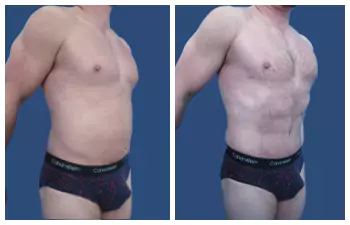Introduction: How painful is liposuction?
Liposuction, a sought-after cosmetic procedure, promises body contouring results. But a question that often arises is: How painful is liposuction? The answer to this question is multifactorial and based on extrinsic and intrinsic factors.
Extrinsic factors include the spectrum of surgery performed by your liposuction surgeon. The first extrinsic factor to consider is the scope of surgery. If you are undergoing localized treatment of a specific concern area, you will experience less discomfort than if you undergo treatment of your entire body circumferentially, termed 360 lipo. This is because the movement of the liposuction wands by itself is mechanically traumatizing. The second component is whether or not you are taking advantage of advanced liposuction tools that provide the advantage of loosening the fat cells prior to extraction. The Gold standard in liposuction involves the use of ultrasound energy VASER technology that teases the fat off of the nerves and blood vessels before extraction. Naturally, liposuction with advanced energy makes it less traumatic to the tissues when removing the fat. This translates to less pain.


Intrinsic factors include genetic factors you are born with and define your pain tolerance. If you are generally tough, then you may experience very little discomfort. If you are a sensitive individual you may experience more prolonged discomfort that may last a few days to a week. Consuming pain medications will also help you tolerate the immediate postoperative period. Finally, if you have had prior surgery such as even prior liposuction, you will have scar tissue build up in your soft tissues. Surgical history that results in scarring will also result in increased pain experience.
To appreciate the nuances of pain and how painful liposuction can be let’s delve into the subject further.
Unveiling the Truth About Liposuction Pain
Liposuction surgery has evolved over the years, with advancements in techniques and anesthesia. But like any surgical procedure, it comes with its share of discomfort and pain.
During the Procedure: Anesthesia to the Rescue
Most liposuction procedures are performed under general anesthesia. This means that during the surgery, patients are in a deep sleep and do not feel any pain. The choice of anesthesia, whether general or local, depends on the extent of the procedure and the surgeon’s recommendation.
Post-Procedure: A Spectrum of Sensations
After the surgery, patients often describe the pain as similar to that of a large bruise. The intensity of discomfort varies from person to person. Some might experience mild pain, while others might feel more intense discomfort. Swelling, redness, and inflammation are common side effects that contribute to the pain.
The Recovery Journey: What to Expect
Understanding the recovery process can help set realistic expectations and prepare for the post-operative phase.
The Initial Days: Managing Discomfort
The first few days after the surgery are crucial. Patients might experience mild pain, swelling, and bruising. Over-the-counter pain relievers and prescribed medications can help manage the pain. It’s essential to follow the surgeon’s advice and avoid self-medication. [Link to pain management after surgeries]
Weeks After the Surgery: Healing in Progress
As the weeks progress, the pain starts to subside. However, some patients might feel numbness or tingling in the treated areas. This is a normal part of the healing process. Gentle massages and lymphatic drainage can aid in reducing these sensations and promoting faster recovery. [Link to benefits of lymphatic drainage]
Months into Recovery: Embracing the New Contours
By the end of the third month, most patients are fully recovered. The pain is a distant memory, and the results of the liposuction start to become evident. However, it’s crucial to maintain a healthy lifestyle to ensure the longevity of the results. [Link to maintaining results after liposuction]
Tips to Ensure a Smoother Recovery
A proactive approach can make the recovery process more comfortable and quicker.
Stay Active, But Don’t Overdo It
Light or normal activities, like walking, can promote blood circulation and reduce the chances of blood clots. However, it’s essential to avoid strenuous activities and exercises until the surgeon gives a green light.
Wear Compression Garments
Compression garments can reduce swelling and support the treated areas, ensuring better results and less pain. [Link to choosing the right compression garment]
Stay Hydrated and Eat Nutritious Foods
A balanced diet and adequate hydration can speed up the healing process. Foods rich in vitamins and minerals can boost the body’s natural healing mechanisms.
In Conclusion: How painful is liposuction?
Liposuction, while effective in contouring the body, does come with its share of pain and discomfort. However, with the right care, guidance, and expectations, one can navigate the recovery process smoothly and enjoy the transformative results.
